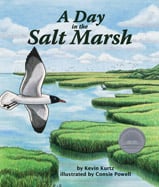Alignment to Standards for VT

| Grade | Number | Standard |
|---|---|---|
| 1,2 | S1-2:30 | the parts that make up living things (i.e., roots, stems, leaves, flowers, legs, antennae, tail, shell). |
| 1,2 | S1-2:30a. | Living things (plants and animals) are made of parts that enable survival. |
| 1,2 | S1-2:34a. | Plants need light (energy) to survive. |
| 1,2 | S1-2:35a. | All animals depend on plants. Some animals eat plants for food; other animals eat animals that eat plants. |
| 1,2 | S1-2:40 | comparing their physical features with those of other organisms. |
| 1,2 | S1-2:47a. | Change is something that happens to many things. |
| 1,2 | S1-2:49 | Identifying the natural sources of the food that is consumed on a daily basis (e.g., Bread-- wheatãflour; Sapãmaple syrup; Pastureãmeat and dairy). |
| 1,2 | S1-2:49a. | Most food comes from farms either directly as crops or through the animals that eat the crops. |
| 2,3 | S3-4:30 | Explaining how the physical structure/characteristic of an organism allows it to survive and defend itself (e.g., The coloring of a fiddler crab allows it to camouflage itself in the sand and grasses of its environment so that it will be protected from pr |
| 2,3 | S3-4:30a | Organisms have physical characteristics that help them to survive in their environment. These structures enable an organism to: defend itself, obtain food, reproduce, eliminate waste. |
| 2,3 | S3-4:34a. | Energy derived from food is needed for all organisms (plants and animals) to stay alive and grow. |
| 2,3 | S3-4:35.1 | Researching and designing a habitat and explaining how it meets the needs of the organisms that live there. |
| 2,3 | S3-4:35.1a. | Food for animals can be traced back to plants. |
| 2,3 | S3-4:35.1b. | Organisms can survive best only in habitats in which their needs are met. |
| 2,3 | S3-4:36 | Explaining how one organism depends upon another organism to survive. |
| 2,3 | S3-4:36a. | Organisms interact with one another in various ways besides providing food Many plants depend on animals for carrying their pollen to other plants for fertilizing their flowers). |
| 2,3 | S3-4:38 | Describing and sorting plants and animals into groups based on structural similarities and differences (e.g., All pine, spruce and evergreen trees have similar leaf structures; Spiders have eight legs, and insects have six). |
| 2,3 | S3-4:38a. | The great variety of living things can be sorted into groups in many ways using various characteristics to decide which things belong to which group. |
| 2,3 | S3-4:47a. | Waves, wind, water and ice shape and reshape the earthês land surface by eroding rock and soil in some areas and depositing them in other areas. |
| 2,3 | S3-4:49 | the properties of living and non-living resources make them suitable for use by humans. |
| PK-K | SPK-K:38 | Sorting and identifying examples of plants and animals. |
| PK-K | SPK-K:38a. | Some living things (organisms) are identified as plants or animals. |
| PK-K | SPK-K:49 | items that students consume on a daily basis: food, fiber, paper, wool or wood). |
| PK-K | SPK-K:49a. | Natural Resources are materials that we obtain from the living and non-living environment. |